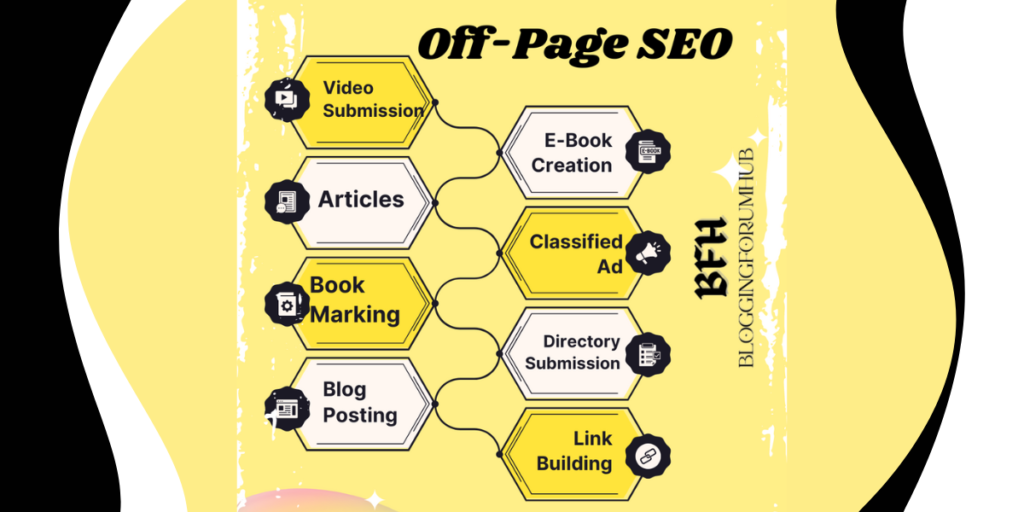Exploring the Main Types of SEO: A Complete Guide
Among the variable arenas of digital marketing, SEO proves to be essential for every business trying to expand. Expanding a website’s visibility on search engines like Google is the goal of search engine optimization, or SEO.
SEO is an integrated approach. Knowing SEO’s many types and how they affect your website’s overall performance is crucial to implementing SEO successfully. The issue of “how many types of SEO are there?” will be explored as we examine the four types of SEO in this extensive article.
Table of Contents
ToggleWhich four SEO types are there?
It’s necessary to understand four main types of SEO because they each focus on different aspects of website optimization. While discussing SEO types
1. On-page SEO:
On-page SEO is the process of optimizing a single web page in order to boost its search engine rating and attract natural visitors. This kind of SEO focuses on components of the HTML source code and content that may be optimized, such as:
- The act of identifying and exploiting relevant keywords that visitors are bound to use to locate your products or services is known as keyword optimization.
- Meta Tags: producing catchy headlines and description tags that correctly summarize the page’s content and inspire readers to continue reading.
- Header Tags: To arrange material and facilitate search engine processing and ranking, use header tags (H1, H2, and H3).
- URL Format: making the user experience better by creating clear, informative URLs that contain goal keywords.
- Internal Linking: Within your website, strategically connect to other relevant sites to improve visibility and build link equity. This is known as internal linking.
- Content Quality: Ensuring original, high-quality material that benefits visitors and promotes long page views is known as content quality.
- Image optimization is the process of providing pictures with alt text to make them easier for search engines to read and to speed up page loads.

2. Off-page SEO:
To increase your website’s popularity and credibility, off-page SEO focuses on actions taken outside of it. Mainly focused on creating backlinks, this kind of SEO includes the following:
- Building backlinks: getting trustworthy websites to connect to your website in an effort to indicate to search engines that it is a useful resource.
- SMM: Promote your material on social media sites to boost engagement and improve website traffic. This is known as social media marketing.
- OutReach: Working with noteworthy individuals in your field to expand your audience and obtain beneficial backlinks is known as influencer outreach.
- Guest Blogging: Generating backlinks and establishing authority by writing guest articles for other websites within your field.
- Brand Mentions: To improve your online visibility, you should promote brand mentions on different online platforms.

3. Technical search engine optimization
For the purpose of ensuring that search engines can quickly crawl and index your website, technical SEO includes improving its technical elements. All the crucial components of technical SEO are:
- Website Performance or Speed: Boosting page loads improves search engine rankings & user experience.
- Mobile responsiveness is a level at which your website has been entirely responsive and offers a top-notch user experience on every type of device.
- SSL & HTTPS: For securing user data on your website and increasing search engine rankings, use an SSL certificate.
- Making XML sitemaps may help search engines index your pages and recognize the structure of your website. increasing
- The file called robots.txt can be employed for identifying which pages search engines have the authority to crawl.
- Structured Data: Providing extra information about your content to search engines by using schema markup.
- Fixing Crawl Errors: Detecting and fixing problems that restrict search engines from successfully indexing your website.
4. Local SEO
For businesses that operate in certain areas, local search engine optimization is crucial. The goal of this type of SEO is to boost your internet visibility in order to draw in local clients. Among the crucial tactics for local SEO are:
- Fixing a profile on Google My Business to help it rank up in local search results and on the Google Maps website is known as “Google My Business Optimization.”
- Local Citations and Directory Listings: ensuring that the details about your company display reliably on local citation sites and indexes.
- Online ratings and reviews: promoting clients to provide positive opinions on sites like Facebook, Yelp, and Google.
- Creating material that speaks to your local audience and utilizes local keywords is known as “localized content.”
- Getting backlinks from nearby businesses and websites to improve your local authority is known as “local backlinking.”
How many types of SEO exist?
Though the four types of SEO that have already been examined are the most well-known, there are many more subcategories within the bigger SEO field that may be created based on certain requirements and tactics. Any SEO effort, however, benefits greatly from an understanding of the four types of SEO: on-page SEO, off-page SEO, technical SEO, and local-focused SEO.
Businesses may create a complete SEO plan that covers every aspect of website optimization, from technical improvements and local promotions to content production and keyword targeting, by mastering these SEO techniques. Regardless of your level of experience with SEO, focusing on five key areas can help you improve your organic traffic, search engine rankings, and overall online success.
Other Major SEO Types
Apart from the main categories of SEO, there are a few other significant ones to take into account:
E-commerce SEO: Customized techniques for online shop promotion that increase sales and visibility of goods.
Voice-search SEO is a method of creating things appropriate for voice search demands, which is a growing trend with both AI voice assistants and smart speakers.
Video Seo: Improving the reach of clips on search engines or websites like YouTube is known as “video SEO.”
International SEO is used for techniques for making your website as accessible as possible to an array of nationalities and languages.
Mobile SEO: Boosting the user experience on phones and tablets by concentrating on mobile-friendly optimization.
Conclusion
To sum up, understanding all types of SEO and utilizing best practices in each area is essential to website optimization and maintaining your position of competitiveness in the online market. Keeping up with the most recent SEO trends and tactics helps ensure that your website is visible and helpful to your target audience as search engines continue to change.














